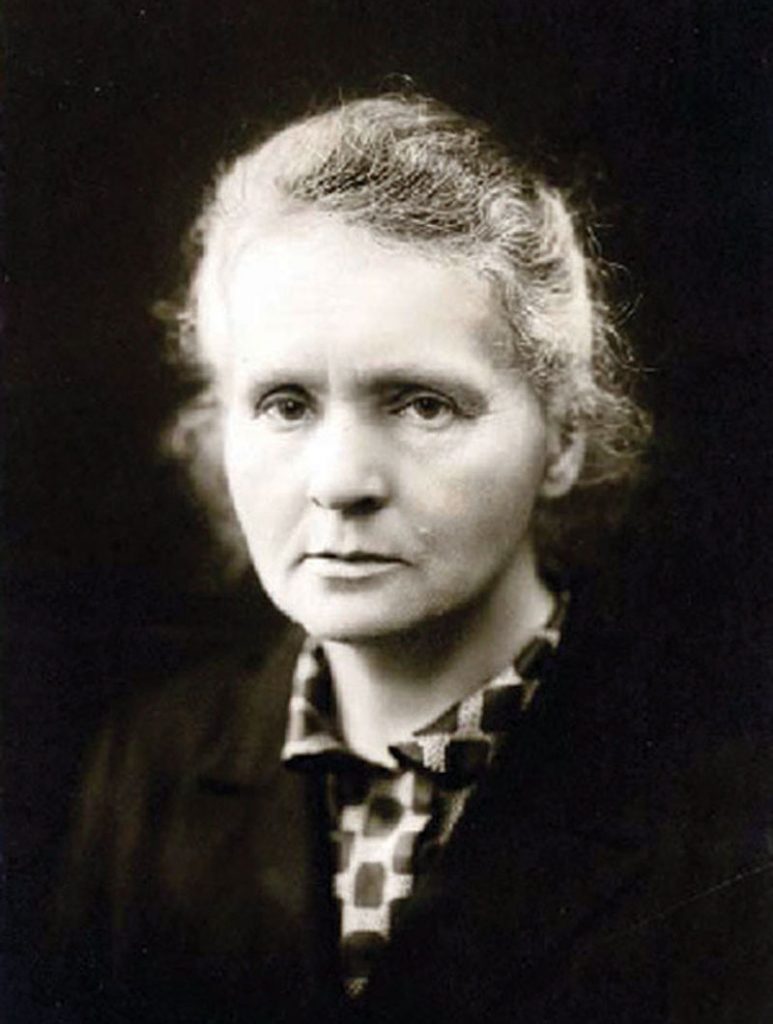Marie Sklodowska Curie (1867-1934) was a Polish and naturalized-French physicist and chemist. Curie was a pioneer in researching radioactivity, winning the Nobel Prize in Physics in 1903 and Chemistry in 1911. Curie never worked on the Manhattan Project, but her contributions to the study of radium and radiation were instrumental to the future development of the atomic bomb.
Early Years
Curie was born in Warsaw, Poland on November 7, 1867, which was then part of the Russian Empire. University education for women was not available in Russia at the time, so Curie left to pursue her degrees at the University of Paris in 1891. The beginning of her scientific career was an investigation of the magnetic properties of various steels. In Paris, she also met her husband Pierre Curie. While she tried to return to work in Poland in 1894, she was denied a place at Krakow University because of her gender and returned to Paris to pursue her Ph.D.
Scientific Contributions
Adopting the study of Henri Becquerel‘s discovery of radiation in uranium as her thesis topic, Curie began the systematic study of other elements to see if there were others that also emitted this strange energy. Within days she discovered that thorium also emitted radiation, and further, that the amount of radiation depended upon the amount of element present in the compound. Thus, she deduced that radioactivity does not depend on how atoms are arranged into molecules, but rather that it originates within the atoms themselves. This discovery is perhaps her most important scientific contribution. For their joint research into radioactivity, Marie and Pierre Curie were awarded the 1903 Nobel Prize in Physics.
As a team, the Curies would go on to even greater scientific discoveries. In 1898, they announced the discovery of two new elements, radium and polonium. Isolating pure samples of these elements was exhausting work for Marie; it took four years of back-breaking effort to extract 1 decigram of radium chloride from several tons of raw ore. In 1906, Pierre was killed in a traffic accident. Marie carried on their research and was appointed to fill Pierre’s position at the Sorbonne, thus becoming the first woman in France to achieve professorial rank. In 1911, Marie won her second Nobel Prize, this time in chemistry, for isolating pure radium.
Later Years
During World War I, Curie served as the director of the Red Cross Radiology Service, treating over an estimated one million soldiers with her X-ray units. She traveled to the United States in 1921 to tour and raise funds for research on radium. She returned to Poland for the foundation laying ceremony for the Radium Institute, which opened in 1932 with her sister Bronislawa as its director.
Curie died in 1934 of radiation-induced leukemia, since the effects of radiation were not known when she began her studies. In 1995, her and Pierre’s remains were moved to the Panthéon, the French National Mausoleum, in Paris. She was the first woman to receive that honor on her own merit.





